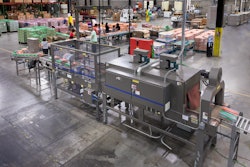The reasons a Consumer Packaged Goods company may pursue a relationship with a contract manufacturer are many. I often hear that one of the most consistent factors in successful engagements is the relationship they maintain with their partners. So, let’s look at what makes a great relationship.
As we’ve discussed previously, great relationships have many factors. Some may be uncontrollable. However, there are many controllable factors that can have a profound effect on a successful CPG/co-man relationship. These include:
· The provision for safety
· The power of trust
· The purpose of honesty
· The place for negotiation
· The price of “skin in the game”
· The protection of the brand
· The promise of confidentiality
Like we did in the last issue of Contract Packaging magazine (see article here), let’s take a look at a couple of these factors, as we continue our journey into relationship “pillars.”
The purpose of honesty
Like safety, it would be great if honesty could just be assumed in a business (or any other) relationship. Most of the time, we should be able to expect honesty in our conversations, or even in negotiations (we’ll get to those later). But, truly effective relationships call for a kind of honesty that does more than just tell the truth when we speak or write.
Effective relationships go deeper into a level of honesty that causes both parties to find common ground, or work for it where it doesn’t exist. The type of honesty I am talking about helps to prevent, or at least reduce, surprises along the project journey. Here are some questions to ask yourself to help drive this type of honesty:
1. When discussing a potential project and possible costs or timing, how accurately do you share the specifics of your project?
· Do you share that it has a target cost you need to hit?
· When appropriate, do you share that the “project” is really just an idea, and may or may not ever be approved?
· Conversely, do you play coy by saying that you are just “thinking about” an idea when you know that your company is deeply committed to moving forward with all haste?
2. When talking about risks to your joint work with a contract provider, do you ask questions about your project’s fit with their strategic plans and objectives?
· Do you make it okay for a provider to tell you a project is not a good fit for them?
· Do you offer a provider the chance to share the good parts and the challenging parts of taking on your project?
· Do you ask if the project could ever reach a size that would cause them a concern?
Asking these questions will help you to have more than a surface look at the key issues that lead to strong partnerships. Deciding to ask them shows that you are sincere in your desire to be a “good partner.” It also just may get you the nod for a project when others are knocking at the partner’s door at the same time you are. This kind of openness from you also conveys a depth of honesty that can be the difference between transactional arrangements and true partnerships.
The place for negotiation
The thoughts of negotiation often turn simply to cost discussions. But there is so much more to a partnership and to an ongoing business arrangement than just the price of the goods being provided. In considering where negotiation fits into the picture, the section title I used really helps frame the discussion. I believe negotiation is often about knowing your place. To know your place, your standing, and your importance (or the importance of your project) to another entity means to know them. You must understand how they think, how they work, and what is important to them.
You see, many factors ultimately roll into the consideration set for determining pricing. Factors can include:
· Constraints on products or material sourcing
· Context in which your products will be produced
· General fit of the products with the manufacturing process
The best partnerships understand how the co-man or co-packer’s costs are built. While very few partnerships get to the point of sharing every line of the contract provider’s P&L, those parties that share enough understanding to explain where they can improve pricing or how an added feature or service will affect costs are the kind of partnerships that can find their way to “win-win” situations.
I’ve heard it said that the best arrangements are the ones that have equal pain for both parties. But, I’m a much bigger fan of the arrangements that bring about equal benefit and reason for optimism for both parties. Why must this negotiating stuff be unpleasant, anyway?
In our next column, we’ll explore a few more pillars of a great partnership between CPGs and contract providers. In the meantime, keep challenging yourself to be more honest and open in your communications to make those negotiations reach the win-win objectives more quickly!
Robby Martin is Engineering Specialist for Bush Brothers & Company.

























